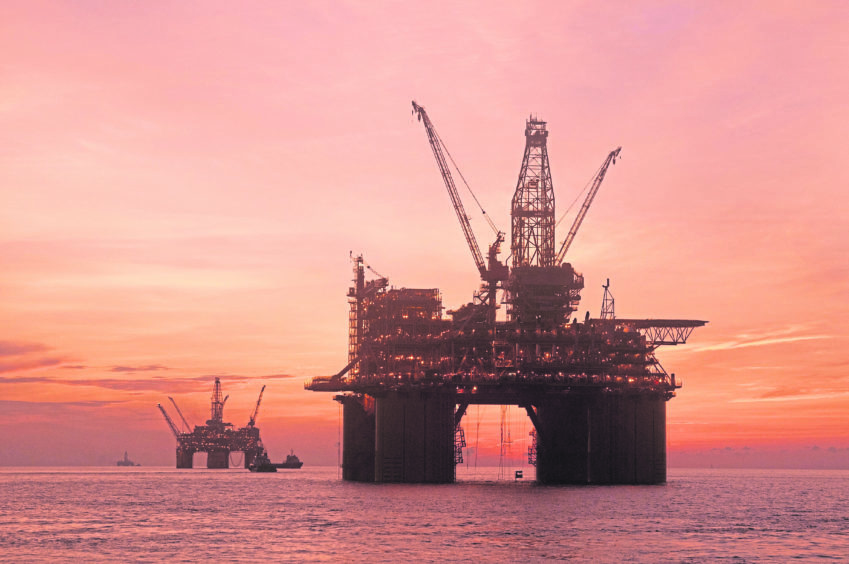
The oil and gas sector will enter 2022 with record cash flows amid high commodity prices, but increasing pressures on finance in the wake of COP26 make for an uncertain outlook.
More than 40 projects worth over 50 million barrels of oil equivalent (boe) each will be sanctioned next year, as the oil and gas sector continues to rebound, according to Verisk-backed energy analysts Wood Mackenzie.
However, the group also says that the upstream industry must respond to pledges made at COP26 and governments must set a course for the industry to follow.
Presenting WoodMac’s Global Upstream Outlook 2022, VP upstream research Fraser McKay said the sector heads into next year facing “peak uncertainty” with record cash flows tempered by increasing environmental scrutiny.
Based on a Brent price of around US$70/bbl, oil and gas cash flows will be at near-record levels, Mr McKay said. At US$80/bbl, this would would near $1 trillion (on a post-tax, post-capex, pre-financing and dividends basis).
“Despite this, for many stakeholders and even some chief executives, the sector’s risks outweigh its upsides. This tension will define 2022,” he added.
The report notes that as governments align around net zero goals, it is likely that next year will see more carbon taxes enacted to meet COP26 pledges.
At the same time, governments may also target outsized cash flow to fill pandemic-induced budget deficits. WoodMac notes that while windfall taxes on sectors such as energy are possible, so are more holistic energy fiscal terms and incentives for new developments such as carbon capture and storage (CCS) or hydrogen.
Citing the advent of new initiatives like GFANZ, McKay said: “Financing oil and gas was getting harder before COP26, but the pressure will ratchet up in 2022… Watch for the pool of backers to shrink, borrowing costs to increase, and project financing for oil to get harder.”
However, he noted: “Lending will not dry up immediately. And gas – especially where aligned with coal retirement or CCS – will be spared the worst.”
Investment and production
WoodMac finds that while investment will increase, capital discipline will remain. It forecasts a 9% year-on-year increase that would take global spending above US$400 billion in 2022.
At the same time it expects a global reinvestment rate (capital investment divided by pre-dividend post-tax operating cash flow) of 40% – near record lows at the forecast price.
Analysts expect more than 40 projects over 50 million boe to be sanctioned in 2022, with “low-breakeven, low-carbon deepwater projects” dominating greenfield final investment decisions (FIDs).
While project economics are robust, it believes that short payback periods and low emissions will be “prime considerations.”
Added Mr McKay: “Companies will allocate more capital to upstream decarbonisation. Value accretive solutions, which increase product sales, will continue to lead the way, but CCS projects will gain momentum and attract new participants.”
Increased emissions benchmarking reporting is likely to drive further action on decarbonisation, while electrification will remain top of the industry agenda. This is particularly spurred on by the Global Methane Pledge, announced at COP26, in providing a “tangible step” towards regulations, penalties and fines.
Exploration
Wood Mackenzie said oil and gas exploration will see a “repositioning” to meet the goals of the energy transition over the next year.
This will see advantaged resources prioritised, which will replace more mature and legacy assets – even for those companies unconvinced by demand forecasts.
The group expects conventional exploration to follow a path set in 2021, despite improved prices, with total spend of $20-25 billion and wildcatting led by majors and larger national oil companies (NOCs).
Analysts expect 15-20 billion barrels of oil equivalent to be discovered, around three-quarters of which will be by majors and NOCs.
Geographically, it highlights notable deepwater plays, including major prospects in Brazil, Guyana, Suriname, Namibia and South Africa. Deepwater is likely to account for half of all new volumes.
Mr McKay added that gas is likely to account for around half of all discovered resources, matching trends in 2021.
“With a focus on lead times and carbon, explorers will favour piped gas over liquefied natural gas, for emissions as well as payback purposes,” he continued.
Oilfield services
Meanwhile, pressure on the service sector is likely to grow in 2022.
WoodMac notes that operators will experience inflation of 4-10% next year, depending on the sector. However, the extent to which this is felt by service companies depends on the pace activity.
Global supply chain disruption, labour costs and increasing commodity prices will be passed through to operators, it said, but this is unlikely to help services’ profit margins.
Much therefore depends on activity, as utilisation must increase before the service sector can exert price pressure. In the meantime, pressure on an already weak supply chain will add project execution risk as well as increased costs, WoodMac said, with hotspots like Norway and the US Lower 48 first affected, McKay noted.
Restructuring will continue in subsurface organisations to meet growing interest in areas like CCS, geothermal and hydrogen storage, as operators look to retain experts, while they remain agnostic to the application of their skills.
Recommended for you
